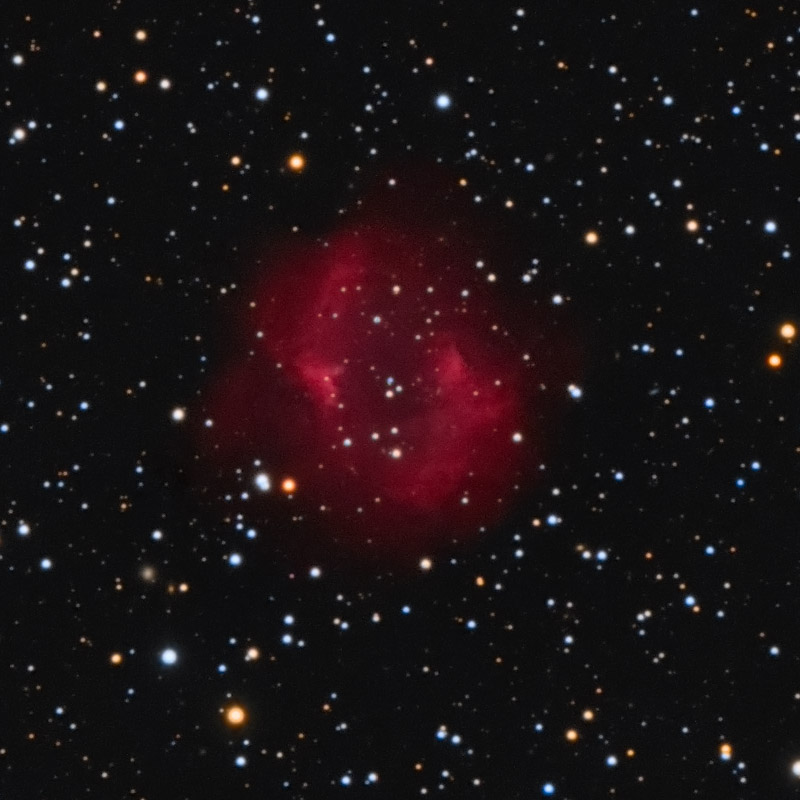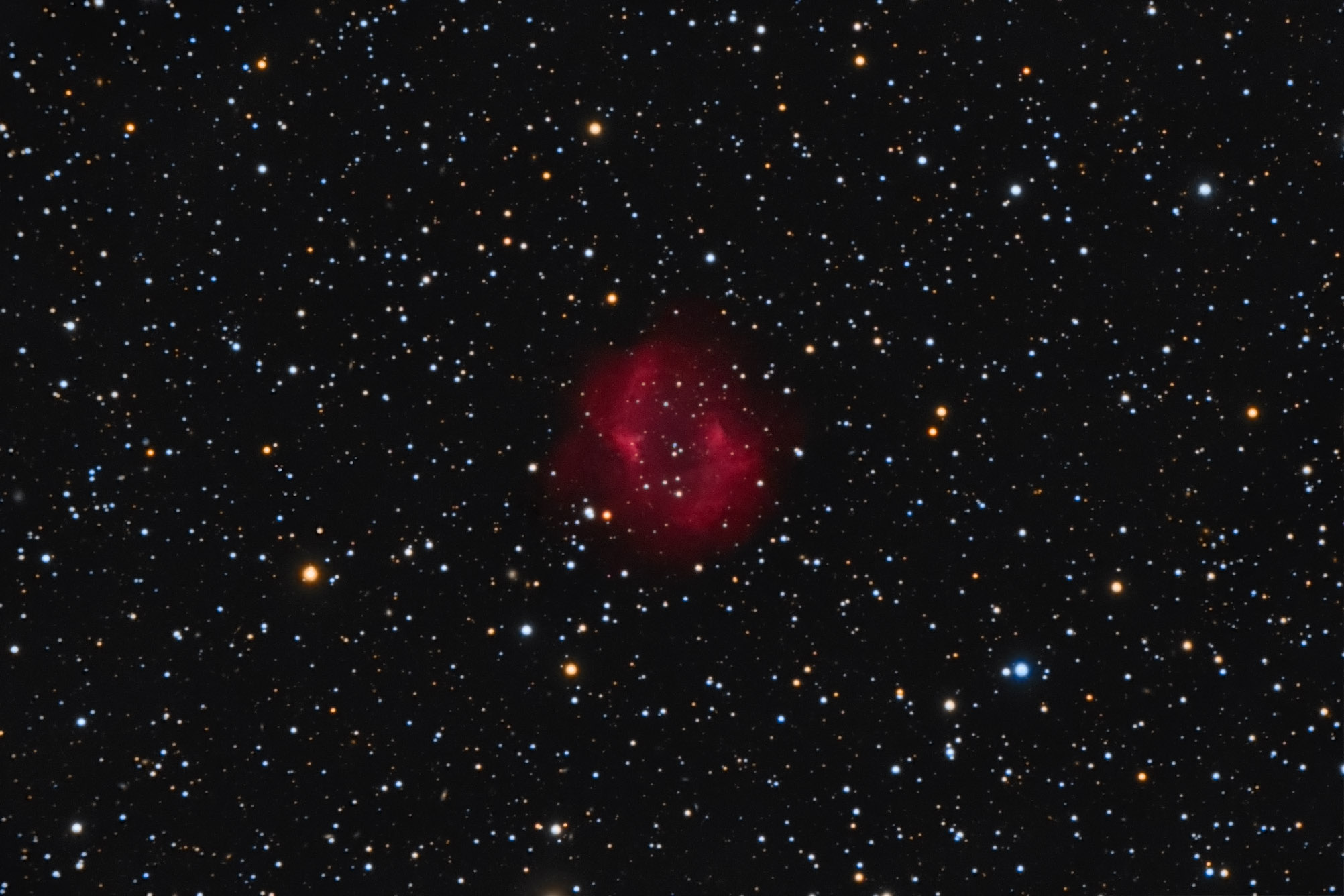Object name: PNABELL24Designation(s): PNABELL24, PK 217+14.1 aka Abell 24 is a rather large planetary nebula in Canis Minor. Distances to planetary nebulae are hard to determine. This one is close enough a ballpark answer can be obtained by parallax though working at the extreme limits of this mode. The best value I could come up with is 1700 light-years with an error bar going from 1525 to 2063 light-years. A surprisingly small range for this distance. At least to me. The paper is at:
http://iopscience.iop.org/article/10.1086/510348/pdf;jsessionid=73E25EF08CA5CB9C039A2584E798C213.c3.iopscience.cld.iop.org
Assuming the 1700 light-year distance the nebula is about 3.3 light years across assuming it is 400 seconds of arc across. All sources say it is only 285" but measuring my FITS images I get 400 seconds. The 285 is from measuring only the brighter portions it appears. The full image is at 1.01 seconds per pixel so you can measure it yourself with any decent image program. The central star is very obvious as the blue star at its very center. It is providing the energy to illuminate the nebula. It may be a dead star (no longer creating energy by fusion) and a very small white dwarf (well blue dwarf) but it is pouring out the ultra-violet light that causes the hydrogen and nitrogen in the nebula to glow bright red. Red planetaries like this are rather uncommon. Most shine with a teal color of glowing oxygen III ions.
While a few dozen galaxies are scattered about the field, none have any redshift data. Though one just off the frame is sending its glow into the very bottom of my image below the nebula. It is CGCG 002-018. A rather large elliptical galaxy some 260 million light years away. I didn't realize it was there or I'd have planned to include it.
14" LX200R @ f/10, L=6x10' RGB=2x10'x3 (no H alpha), STL-11000XM, Paramount ME | | 
